The 50 Best Tech Products of All Time
By Christopher Null, PC World
Page 1 of 5
From breakthrough hardware to time-honored software, we salute those amazing products that changed technology--and our lives--forever.
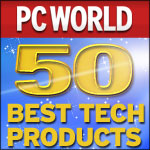
The Beatles. Citizen Kane. Muhammad Ali. Many have laid claim to being the "best ever" in their respective fields of work, but only one can top the list. And the same is true when it comes to technology. So what's the best tech product to come out of the digital age? And what qualifies a product as being "best"? First and foremost, it must be a quality product. In many cases, that means a piece of hardware or software that has truly changed our lives and that we can't live without (or couldn't at the time it debuted). Beyond that, a product should have attained a certain level of popularity, had staying power, and perhaps made some sort of breakthrough, influencing the development of later products of its ilk. So after considering hundreds of products and engaging in many hours of painstaking debate, PC World presents the 50 best tech products. Note that we're looking only at technology that has arisen since the dawn of the personal computer, so don't expect to see the cotton gin and the transistor radio on the list. Instead, you'll find gear that, in all likelihood, you used yourself at one point or another--and, in many cases, products you're still using today.
And, oh yeah, you may think our choices are ridiculous or that we've left out much more important products. Have at us. Smack us down righteously. Enjoy!
1. Netscape Navigator (1994)
Marc Andreessen may have known what he was getting into when he cowrote Mosaic at the National Center for Supercomputer Applications, but it wasn't until he graduated from college and met with some Silicon Valley types that the Web revolution really began. In 1994 Andreessen launched Netscape Communications, offering his new Navigator Web browser (based on Mosaic) to the world. Finally, users outside of the academic world would get a taste of HTML, and nothing has been the same since. Netscape was the reason people started spending hours a day on the Internet, leading to the boom (and bust) of many a Web site. The advent of the browser also led to the U.S. Department of Justice's antitrust suit against Microsoft, after the company embedded Internet Explorer into Windows. And Netscape's August 9, 1995, IPO is universally considered to be the official start of the dot-com era. Netscape, unfortunately, couldn't keep up with the times and was surpassed by Internet Explorer in the late nineties. The Netscape browser still exists (under the ownership of AOL), but has fallen into utter disuse. Nevertheless, its influence can still be felt all over the Web. Fragments of its original code, for instance, live on in just about every browser still in production, from Mozilla Firefox to Internet Explorer (click Help/About Internet Explorer in that browser to see for yourself). To reminisce about bygone versions of Netscape, check out the Netscape Browser Archive . 
2. Apple II (1977)
While the original Apple I computer was really just a hobbyist's diversion, the Apple II was a computer for Everyman. Beating the IBM PC 5150 to market by four years, the Apple II (and its cousins, the II+, IIe, and IIc) quickly became the computer for people who wanted a machine that actually did something (competitors like the Commodore 64 and TRS-80 Color Computer were mere toys by comparison). What was so special about the Apple II? It offered plenty of productivity tools (it was the first PC to run the VisiCalc spreadsheet, for instance), it was good at gaming, and it was quite extendable (when is the last time you saw a computer with eight expansion slots?). And the machine itself looked so much cooler than anything that had preceded it, a philosophy that still lives on in the Apple computers of today . The Apple II may not have been the first personal computer, but it was the spark that ignited the personal computing industry. If you're lucky, you might still be able to find an Apple II on eBay , though they don't seem to last long.
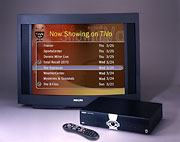
3. TiVo HDR110 (1999)
It's hard to believe but it's true--TiVo has been around for almost a decade, making it nearly geriatric in the world of technology. The premise is simple: TiVo (and its competitor ReplayTV) replaced the VHS tape with a monster hard drive, recording shows to disk instead of to analog media. That meant you could pause and resume live TV, skip through commercials in an instant, and record an entire season of shows with just a few clicks of the remote control. TiVo's innovations (it is now up to its Series3 model ) helped it to handily beat ReplayTV in the battle for mind share, though it struggled to reach profitability and now risks falling prey to that killer of many a promising company: commodity status. Though TiVo the brand may eventually die, "tivo" the verb will probably be with us forever.
4. Napster (1999)
No, we're not talking about the current Napster subscription service, which pretty much has nothing to do with Shawn Fanning's groundbreaking file-swapping software. Say what you will about how Napster facilitated copyright violation on a massive scale (it had 60 million users at its zenith), but piracy was around well before Napster came along and has continued to thrive without it. Rather, Napster is of critical importance not only for inventing peer-to-peer technology , but also for forcing record labels to play ball and work with tech companies to make file-sharing practices in the digital music industry legal. Even P2P is finally on the verge of legitimacy, with companies such as Warner Brothers and Paramount recently signing deals to distribute content through P2P upstarts BitTorrent and TV streamer Joost .

5. Lotus 1-2-3 for DOS (1983)
Whenever the topic of killer apps comes up, mention of Lotus 1-2-3 is never far behind. This venerable spreadsheet program was the PC's first critical application, and it almost single-handedly gave the PC the major push it needed, past all other competing hardware platforms, to become the de facto standard for business users. Lotus 1-2-3 wasn't the first spreadsheet app, but it was visibly superior to competitor VisiCalc, and it remained the standard until the rise of the Windows era and Microsoft Excel (see number 49). Lotus chose to throw in with OS/2 instead of Microsoft, alas, ultimately sealing its fate in the market, though it lives on now as Lotus 1-2-3 Millennium Edition . And if you could kick yourself for tossing out your old version, $20 or $30 can get you a copy of Lotus 1-2-3 on eBay .
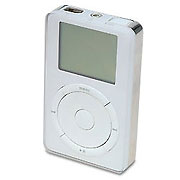
6. Apple iPod (2001)
Portable music players were old hat by 2001, having been around for several years and already a staple of cheap knockoff specialists. But Apple thought it could do better, and it came to the game determined to shake things up. Mission accomplished. The iPod was an instant success, reinventing the clunky and utilitarian digital music player as a stylish--not to mention elegantly simple--way to listen to music. The market responded categorically. Apple commands a monster 73 percent share of the music player market. Its closest competitor, Sandisk, has 9 percent. Newer iPods have greatly expanded that market by adding features like video and slimmer cases--and so far this franchise freight train shows no signs of slowing down.
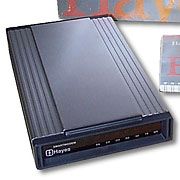
7. Hayes Smartmodem (1981)
In 1978, with $5000 in hand, Dennis Hayes launched what would become one of the most noteworthy tech companies of the eighties: Hayes Microcomputer Products . Soon after founding his company, Hayes would release its flagship product, the 300-baud Smartmodem. Primitive modems of the time generally required buggy acoustic couplers . But Hayes outdid them all with an affordable stand-alone unit that plugged directly into a phone jack. Eventually the screeches of carrier tones were heralding the computer telecommunications revolution, and online bulletin board systems sprang up everywhere. Competition ensued, with Hayes battling U.S. Robotics, Diamond, and others to see who could be fastest. Personal modems ultimately hit 56 kilobits per second . But although they have been far outpaced by broadband technology, we'll still be seeing modems in many homes for years to come. Original 300-baud Smartmodems are very difficult to find, but some of the "faster" models (1200 and 2400) sell for around $20 to $30 on .
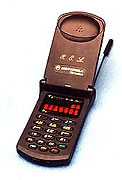
8. Motorola StarTAC (1996)
Before the StarTAC , cell phones were enormous bricks that users were almost embarrassed to be seen with. Then came this svelte little number, weighing about a mere 3.1 ounces and sporting a clever clamshell design that had never been seen before. It soon became the cell phone to own, remaining so for half a decade and inspiring a legion of cell phones to follow. Think it's a monster by today's standards? Motorola's megapopular Razr is a direct descendant of the StarTAC, and it's 0.2 ounces heavier . Collectors can pick up StarTACs on eBay for about $25.
9. WordPerfect 5.1 (1989)
It's surprising what DOS, in its waning years, was able to pull off. The poster child for DOS-based productivity, WordPerfect 5.1 , was perhaps the final killer app on that aging platform. The word processor's innovations were numerous, including pulldown menus, support for tables, and a famous Reveal Codes mode that showed all the hidden typographical commands embedded in a document, and allowed you to edit them without a graphical user interface. Newer Windows versions of WordPerfect exist, but WordPerfect 5.1 endured for years and years, as many businesses, especially legal firms, clung to it for dear life in an effort to keep from having to upgrade to Windows. If you're intent on finding a copy of the original software (which means you're probably a lawyer who's desperately trying to open an old file), it is being sold for around $25 on eBay .

10. Tetris (1985)
In the beginning, the goal in most video games was to shoot aliens, race through a maze, or beat up thugs. None of the games required much thought, just a deft hand on the joystick and a pocketful of quarters. Alexey Pajitnov's independently developed Tetris was one of the first games that required actual use of your brain, and it shook up the gaming industry in profound ways. Pajitnov's game of falling bricks was simple enough to grasp, yet challenging enough to offer endless replay value. Tetris became a hit on a number of platforms, from PC to Mac to Game Boy (in fact, many Game Boy buyers reportedly purchased the device solely to play Tetris). Despite being more than 20 years old, Tetris continues to inspire new variations and knockoffs, demonstrating that a game doesn't need amazing graphics and involved storylines to get people hooked.